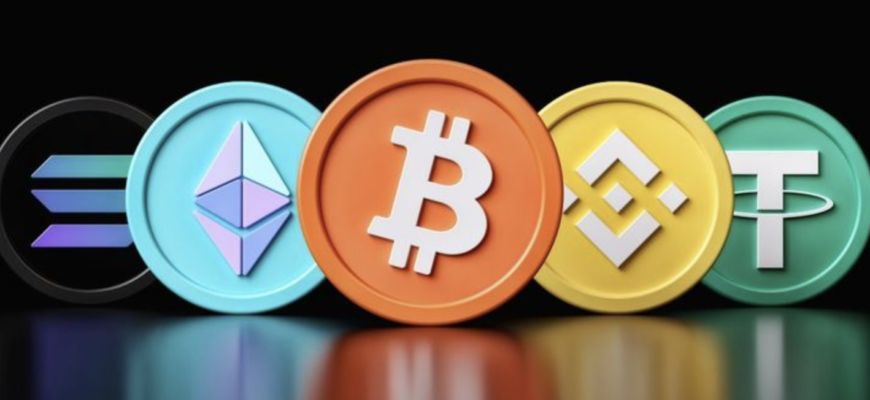The financial world is developing rapidly, providing ever-increasing opportunities for income. Making money with cryptocurrencies in 2024 is especially important due to the development of blockchain technologies, the emergence of new tools, and the improvement of existing methods. Digital assets offer great prospects for investors.
Let’s look at the main ways to make money: trading, staking, lending, and holding. These methods allow everyone to choose the right option based on their experience, financial capabilities, and risk level. To achieve success, it’s important to understand the nuances and characteristics of each.

Cryptocurrency Trading: The Art of Seizing the Moment
Making money with cryptocurrencies in 2024 through trading will require a deep understanding of market movements, technical analysis, and the ability to control emotions. The cryptocurrency market is characterized by high volatility, allowing you to make large profits even in a short period of time. But successful trading requires not only strategy but also discipline.
Types of Trading and Strategies
The process is divided into several categories, each suitable for different types of investors and their goals:
- Day trading: Making multiple trades in a single day. Traders make money from small price fluctuations using scalping and other methods. It is important to monitor charts, use indicators, and respond quickly to market changes.
- Swing trading: Focuses on holding assets for several days or weeks. The goal is to catch significant market movements. This method requires the ability to analyze charts and news to predict trends.
- Positional trading: Long-term trades lasting from several months to a year. Investors look for fundamental changes in the project and industry.
- Scalping: Short-term trades with minimal profits but a high trading frequency. Scalpers make dozens of trades per day using bots and automated algorithms.
Effective trading is impossible without analytical tools: candlestick charts, indicators (RSI, MACD, Bollinger Bands), and technical analysis platforms like TradingView. On cryptocurrency exchanges like Binance, traders use complex orders (stop loss, take profit, and limit) to manage risk.
Tip:
- Market analysis: Technical and fundamental analysis will help predict price movements.
- Portfolio diversification: Investing in different currencies reduces risk.
- Emotional stability: Trading success depends on composure and self-discipline.
Cryptocurrency staking: Passive income on the blockchain
 Making money with cryptocurrency in 2024 through staking is suitable for those who want a stable income without constantly trading. Unlike cryptocurrency mining, the process does not require expensive equipment or large energy costs. Investors receive a reward for supporting the blockchain network.
Making money with cryptocurrency in 2024 through staking is suitable for those who want a stable income without constantly trading. Unlike cryptocurrency mining, the process does not require expensive equipment or large energy costs. Investors receive a reward for supporting the blockchain network.
How Staking Works
It is the process of locking a certain amount of coins into the network to ensure its security and operation. In return, holders receive interest depending on the investment amount and the lockup period. For example, staking Ethereum can earn between 4% and 10% annually.
Popular Platforms:
- Binance: Supports over 100 coins with different conditions.
- Kraken: Allows staking of ETH, ADA, and DOT with flexible terms.
- Trust Wallet: A mobile wallet with support for decentralized staking.
Advantages:
- Passive Income: Generate income without active participation.
- Energy efficiency: Unlike mining, staking does not require computing power.
- Network support: Participation in the development of the blockchain ecosystem.
Risks:
- Asset freezes: If prices drop sharply, it will be difficult to withdraw funds.
- Network outages: Technical issues can affect profitability.
Cryptocurrency lending: How to make money with lending
Making money with cryptocurrency in 2024 through lending attracts investors with high interest rates and minimal participation in the process. This method is similar to a bank deposit, but with much higher rates.
How does staking work?
The essence lies in the provision of digital assets on special platforms for subsequent lending to other users. For this, lenders receive interest, which can reach 10-15% per year.
Popular platforms:
- BlockFi: Offers stable interest on Bitcoin and altcoins.
- Nexo: Supports more than 40 high-risk cryptocurrencies.
Advantages:
- High yield: Interest rates are higher than those of traditional deposits.
- Flexible terms: Ability to choose the loan term and currency.
- Automation: All processes occur automatically through the platform.
Risks:
- Platform reliability: Possibility of losing funds due to service failure.
- Market volatility: Changes in rates can affect the final profit.
Cryptocurrency Holding: A Strategy for Patient Investors
Holding is a long-term investment strategy based on storing assets for several years. These cryptocurrency profits in 2024 are suitable for those who believe in the growth of digital money and are willing to wait for a significant increase in value.
How to choose cryptocurrencies to hold:
- Bitcoin: The first and most famous currency considered “digital gold.” A limited supply (21 million coins) supports its value.
- Ethereum: The leader among smart contract and token platforms. The transition to PoS increases growth potential.
- Promising coins: Projects with innovative technologies and an active community, such as Solana and Polkadot.
Tip:

- Long-term horizon: Invest for 3 to 5 years.
- Fundamental analysis: Study the project’s technologies, teams, and roadmaps.
- Portfolio diversification: Spread your funds across multiple assets to reduce risk.
Conclusion
 Ways to make money with cryptocurrency in 2024 offer many methods for earning active and passive income. Trading, staking, lending, and holding allow you to choose the right strategy depending on your goals and experience. Using these tools wisely will help you achieve your financial goals and adapt to the changing market.
Ways to make money with cryptocurrency in 2024 offer many methods for earning active and passive income. Trading, staking, lending, and holding allow you to choose the right strategy depending on your goals and experience. Using these tools wisely will help you achieve your financial goals and adapt to the changing market.
 en
en  de
de  ar
ar  es
es  hi
hi  fr
fr  nl
nl  it
it  pt
pt  el
el 



